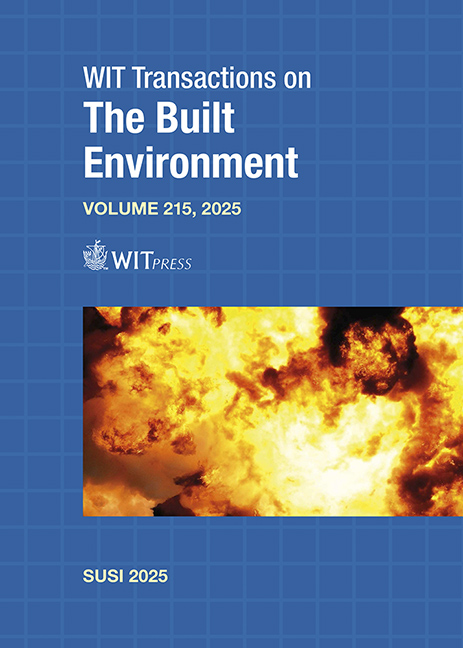THE INCEPTION OF A RAPID PREDICTOR FOR BLAST WAVE SHIELDING: THINKING RADI(C)ALLY
Price
Free (open access)
Transaction
Volume
215
Pages
12
Page Range
85 - 96
Published
2025
Paper DOI
10.2495/SUSI250081
Copyright
Author(s)
JAY KARLSEN, ADAM A. DENNIS, SAMUEL E. RIGBY
Abstract
A rapid and accurate predictor of blast effects in a geometrically complex urban environment has considerable practical value. Therefore, it is imperative to understand the behaviours that arise from blast–obstacle interaction; in particular the ‘primary’ behaviours, like shielding and channelling, which govern the magnitude and distribution of blast loading globally. However, these are entangled with highly-localised, second-order behaviours, like clearing and incidence effects, whose sensitivity and non-linearity have impeded the development of a generalised, first-order predictor for the primary behaviours. Consequently, this work begins to decouple them to permit a study of shielding in isolation. It is demonstrated that many of these secondary effects stem from the mismatch in geometry between the curved blast wave and the flat faces of the rectilinear obstacles commonly studied. Therefore, by curving the obstacle to match the wavefront, a planar interaction is compelled at all stand-off distances, and these secondary behaviours are eliminated. With the effects of shielding isolated, a parametric study of 273 curved wall geometries is undertaken in Viper::Blast, varying the footprint dimensions of an infinitely tall, rigid structure, and its stand-off from a hemispherical surface charge. Full-field peak specific impulse is measured at ground level and the data is used to demonstrate a fundamental consistency in the distribution of the loading across the full extent of the shielded region. A conservative, reduced-order representation for the distribution of peak specific impulse within the shielded region is developed and it is shown to be generalisable for annular sector obstacles of any stand-off distance, size or scale. Future work shall leverage this in the development of a fast-running engineering model for the prediction of the blast loading in the wake of an obstacle.
Keywords
blast, shielding, blast–obstacle interaction, parametric, numerical modelling, polar





